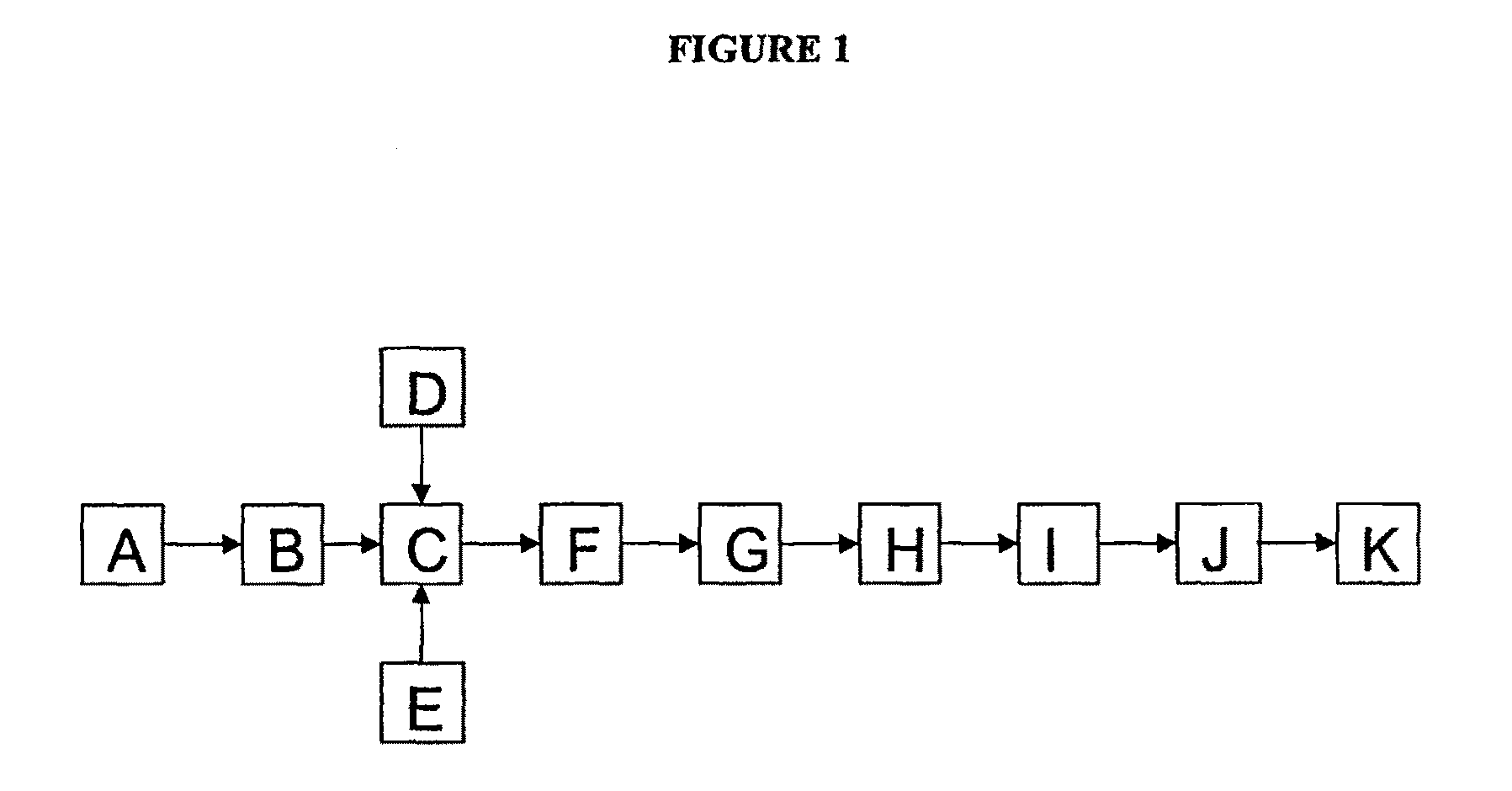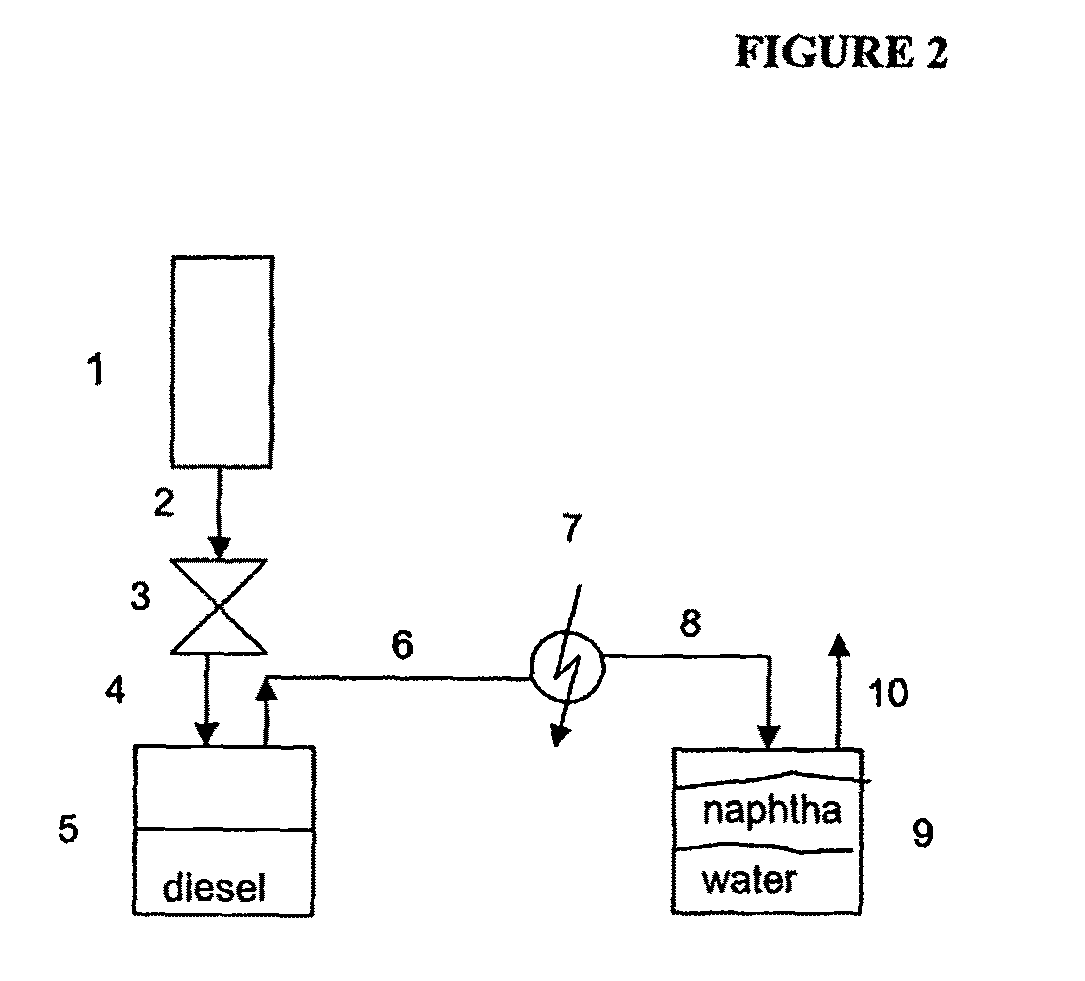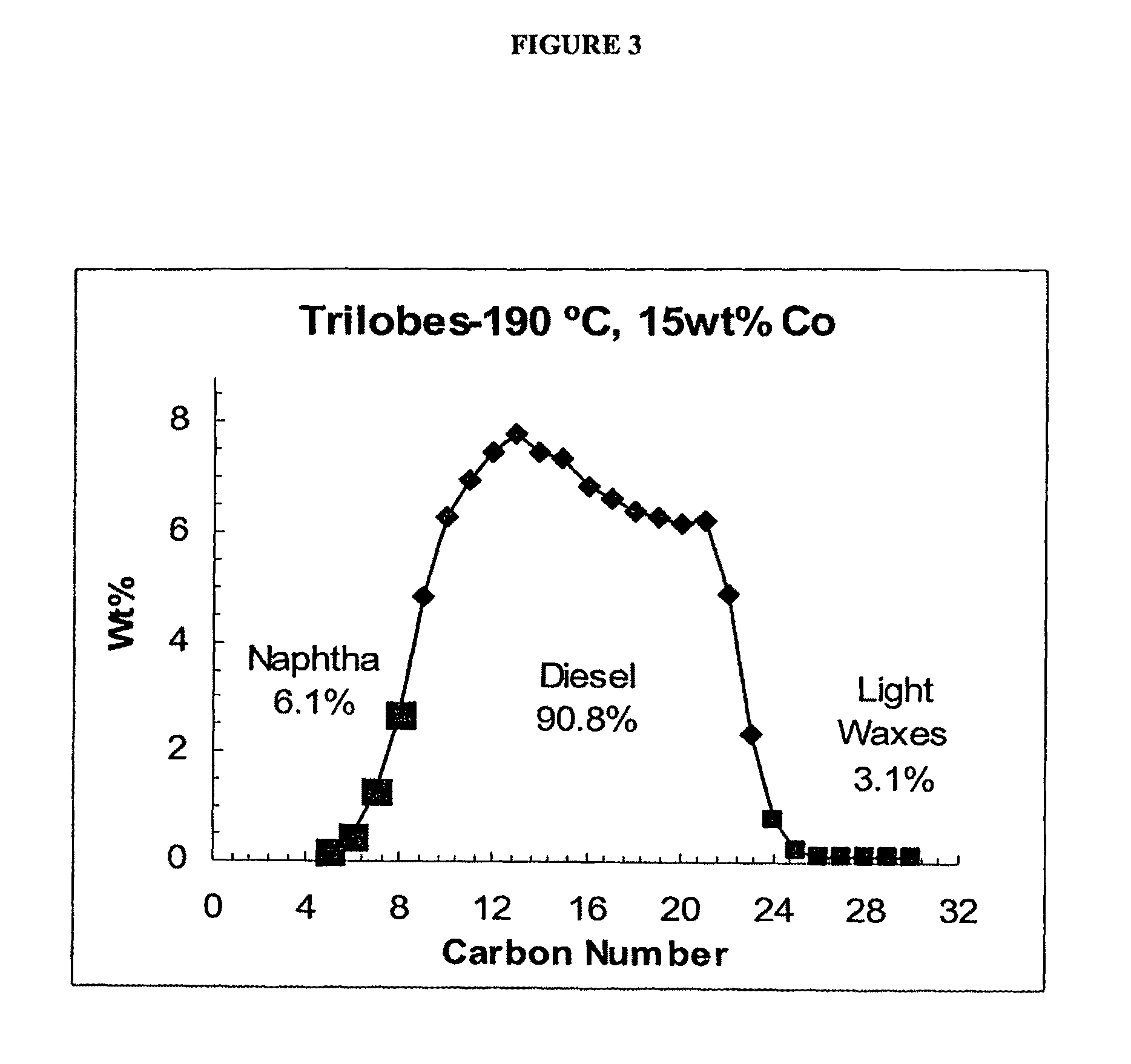Low-pressure Fischer-Tropsch process
a low-pressure, fischer-tropsch technology, applied in the direction of inorganic chemistry, liquid hydrocarbon mixture production, oxygen-containing compound preparation, etc., can solve the problems of high metal dispersion, large cobalt metal clusters, and strong interaction between cobalt metal and oxide supports, so as to achieve low cobalt metal loading, high metal dispersion, and high reduction temperature
- Summary
- Abstract
- Description
- Claims
- Application Information
AI Technical Summary
Benefits of technology
Problems solved by technology
Method used
Image
Examples
example 1
[0084]Catalyst synthesis was conducted by ordinary means as practiced by those knowledgable in the art. The catalyst support was alumina trilobe extrudate obtained from Sasol Germany GmbH (hereafter referred to as ‘trilobe’). The extrudate dimensions were 1.67 mm diameter and 4.1 mm length. The support was calcined in air at 500° C. for 24 hours. A solution mixture of cobalt nitrate and perrhenic acid was added to the support by the method of incipient wetness to achieve 5 wt % cobalt metal and 0.5 wt. % rhenium metal in the finished catalyst. The catalyst was dried slowly and then heated in a convection oven at the rate of 1.0° C. per minute to 350° C. and held at that temperature for 12 hours. A volume of 29 cc of oxidized catalyst was placed in a ½ inch OD tube that had an outer annular space through which temperature-control water was flowed under pressure in order to remove the heat of reaction. In effect, the FT reactor was a shell-and-tube heat exchanger with catalyst placed ...
example 2
[0090]The catalyst used was the same as Example 1, except that the cobalt metal loading was 10 wt %.
example 3
[0091]The catalyst used was the same as Example 1, except that the cobalt metal loading was 15 wt %.
PUM
| Property | Measurement | Unit |
|---|---|---|
| diameter | aaaaa | aaaaa |
| temperature | aaaaa | aaaaa |
| size | aaaaa | aaaaa |
Abstract
Description
Claims
Application Information
 Login to View More
Login to View More - R&D
- Intellectual Property
- Life Sciences
- Materials
- Tech Scout
- Unparalleled Data Quality
- Higher Quality Content
- 60% Fewer Hallucinations
Browse by: Latest US Patents, China's latest patents, Technical Efficacy Thesaurus, Application Domain, Technology Topic, Popular Technical Reports.
© 2025 PatSnap. All rights reserved.Legal|Privacy policy|Modern Slavery Act Transparency Statement|Sitemap|About US| Contact US: help@patsnap.com



